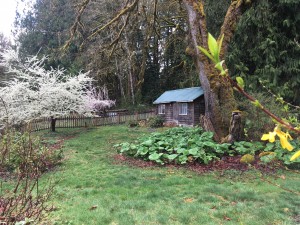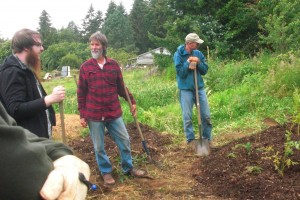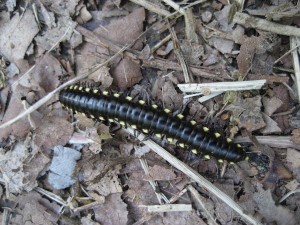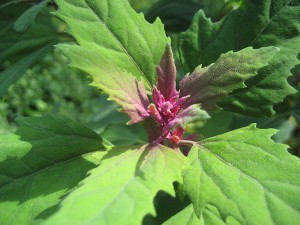We had an amazing event in the beautiful North Cascades. We learned together how to read a landscape and plan for a sustainable system using Permaculture Design Principles with experienced Permaculturalist Brian Kerkvliet of Inspiration Farms.
May 25 & 26, 2019 One or Two Days in the Beautiful North Cascades, Skagit River Ecosystem learning how to heal the earth.
A live consultation allows one to be involved in the Permaculture design process. You will have the opportunity to observe the design considerations and decisions involved in obtaining the best design for the goals of the client considering the possibilities and limitations of the property. The beauty of this kind of event is that it is dealing with a real property and real design parameters and constraints. Seeing the design process first hand allows one to better design their own land without having to attend a full two week permaculture design course.
 Sat. May 25 10am-5pm
Sat. May 25 10am-5pm
Permaculture Design Live Consultation
with Brian Kerkvliet
Sunday May 25, 10-noon Old Growth Forest Walk
Explore an old growth forest with Terri Wilde, observe a healthy ecosystem and learn edible and medicinal uses of plants and fungi. Sun. walk only
Whole permaculture weekend: both days of presentations plus
Evening Social Permie Sharing, Lovely Sleeping Accommodations,  includes Lunch, Dinner and Breakfast
includes Lunch, Dinner and Breakfast
Brian Kerkvliet, a co-steward of Inspiration Farm, has a wide breadth of practical knowledge on how to partner with natural systems to bring forth stability and abundance. Having completed three full Permaculture design certificate courses, he now does consultation work for others who want to fast track the establishment of resilient system on their land. Inspiration Farm is an 11 acre homestead styled farm founded in 1994, integrating Biodynamic and Permaculture practices in relation to annual & perennial food systems, animal husbandry, appropriate technology, and land/water nutrient management. www.inspirationfarm.com
 Design Steps involved include:
Design Steps involved include:
• Client interview and discussion
• Design considerations, goals & strategies
• Walk the land and sketch design
considerations and parameters
• Define property’s zones
• Identifying sector influence
• Water strategies in the landscape
• Look at how to utilize on-site resources
to maximum system benefit
• Put all the information together to map
out a site plan
• Evaluate resources and set a realistic
time-line and phased implementation plan

 We are a part of the web of life. We are not served by cutting the complex threads that sustain us. There is better way that insecticides, toxic hand sanitizers, anti-biotic soap, etc. What if instead of responding with fear, we found creative ways to exist compatibly with living kin?
We are a part of the web of life. We are not served by cutting the complex threads that sustain us. There is better way that insecticides, toxic hand sanitizers, anti-biotic soap, etc. What if instead of responding with fear, we found creative ways to exist compatibly with living kin?

 simplicity, and only having to deal with what we know. I propose we change the paradigm to embrace the complexity of a healthy living ecosystem, a “messy” garden, the wild.
simplicity, and only having to deal with what we know. I propose we change the paradigm to embrace the complexity of a healthy living ecosystem, a “messy” garden, the wild.
